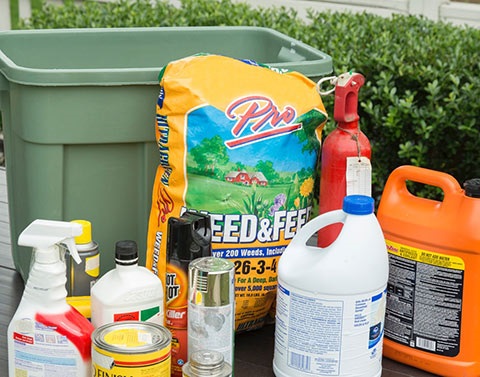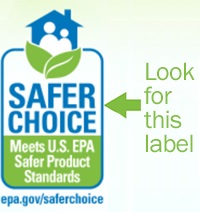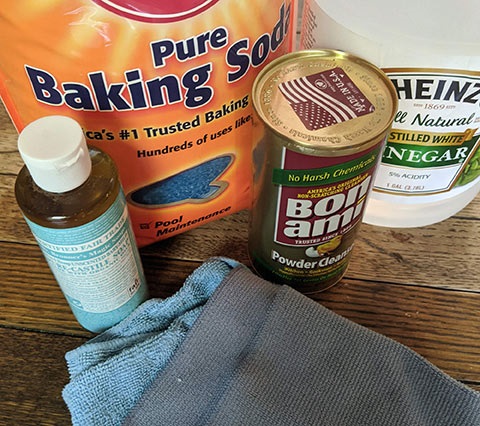Household Chemicals and Hazardous Waste
How to Tell if a Product is Hazardous
The cleaning products and chemicals we bring into our homes can be dangerous – if not to adults, then to our pets or our children.
Check the label for these 4 words
If a product label has any of these words, it is considered hazardous and should be disposed of at designated sites:
- Danger
- Poison
- Warning
- Caution
Common hazardous products you might have at home
 Common household products are considered hazardous, including:
Common household products are considered hazardous, including:
Where to Dispose of Household Chemicals and Hazardous Waste
Factoria Household Hazardous Waste Drop-Off
13800 SE 32nd St. Bellevue, WA 98005
8 a.m. – 4 p.m. (Tues-Fri), 9 a.m. – 5 p.m. (Sat-Sun)
What to bring, and tips for bringing your products safely.
Traveling Wastemobile
The Traveling Wastemobile visits different locations around King County from spring through fall to provide convenient options for disposing of household hazardous products. Typically the Wastemobile visits Kirkland in May, and there are usually many dates in Redmond.
See upcoming Wastemobile events
Household pickup for elderly and disabled residents
Are you a King County resident 65 or older, or a disabled resident? If you do not have a vehicle or are otherwise unable to access a hazardous waste collection site, you can schedule a waste pickup at your home.
Additional drop-off locations for motor oil
O’Reilly Auto Parts
12640 NE 85th Street
Kirkland, WA 98033
AutoZone Auto Parts
12660 Totem Lake Blvd
Kirkland, WA 98034
Staying Safe Around Hazardous Products at Home
Guidelines for using hazardous household products
- Store products in their original containers. Do not remove labels.
- Store hazardous products in a container to capture spills or leaks.
- Clean spills and leaks according to label instructions.
- Never combine products.
- Dispose of household chemicals at a local hazardous waste collection facility. Don’t pour them out on the ground or down a storm drain or throw them in the garbage.
- Don’t stockpile hazardous materials. Purchase the smallest amounts needed; don’t store extra products.
Store hazardous products safely to protect kids, pets and the environment
- Turn spray heads to ‘off’.
- Keep lids on tight.
- Store in a tray or tub to catch drips and leaks.
- Keep products in original sealed containers, never in empty food or beverage containers.
- Store in a covered area, on a shelf or a second story.
How to Choose Safer Products for Your Home and Yard
Read the labels of all your cleaning products and look for these words, which will tell you whether that product is hazardous. You may be surprised at which items, and how many, are hazardous.
Read the label to choose safer products
Avoid using if the label says...
Somewhat harmful if the label says...
 Safest option if the label says...
Safest option if the label says...
Safer household products are marked with EPA’s Safer Choice logo. (EPA Safer Choice products are the safest in their class, even if it says CAUTION on the label.)
You can also make your own safe cleaning products using simple ingredients like mild dish soap, white vinegar, and baking soda. (See below.)
Start with the least hazardous pesticide, or choose natural methods
See how the hazard level of different pesticides stack up, and find less hazardous options plus chemical-free pest and weed control techniques, on the Grow Smart Grow Safe online guide.
The Garden Hotline offers free gardening advice, including natural and effective solutions to yard problems, by email or phone.
Get our tips for natural yard care
Switch to safer, greener cleaning
Safer cleaning ingredients and DIY recipes
 Buy cleaners marked with EPA's Safer Choice label, or use these ingredients to create your own non-toxic, green cleaning products:
Buy cleaners marked with EPA's Safer Choice label, or use these ingredients to create your own non-toxic, green cleaning products:
- White vinegar
- Baking soda
- Bon Ami
- Dr. Bronner’s fragrance free soap or a fragrance free dishwashing soap such as Planet, Seventh Generation or BioKleen
See recipes for safer homemade cleaning products for a tub and sink cleaner, drain cleaner, toilet bowl cleaner, floor cleaner, counter cleaner, and window and mirror cleaner.
Get safer cleaning recipes
Tools for safer cleaning
- Microfiber cloth
- Non scratch pad
- Nylon brush
- Spray bottle (for storing homemade cleaning solution)
- Bucket
Safer cleaning techniques
Adopting preventative practices will save you hours of cleaning and reduce your need for aggressive cleaning products. Rinsing and drying showers with a squeegee after daily use can prevent soap scum buildup. Taking off shoes at the door can greatly reduce the amount of dirt tracked into the house.
When you switch to green cleaning products, prevent your house from excessive soil by following these steps for success:
- Remove the big dirt first — vacuum!
- Start with the mildest cleaner —if steps 3-5 don’t work with the mildest cleaning product, work your way to more aggressive products
- Add a dash of hot water
- Let it sit
- Use elbow grease
- Rinse and dry — you’ll remove any residue that might attract more dirt